
Historians date the beginning of the automobile era back to 1885, when a German mechanical engineer named Karl Benz began production of his Benz Patent Motorcar — but America soon started catching up after a couple of Massachusetts bicycle mechanics, Charles and J. Frank Duryea, designed their own car in 1893.
By the turn of the century, some 30 companies were making autos, and by 1910 there were almost 500 entries in the field. The earliest gasoline-powered vehicles were basically little more than wagons with engines in place of horses (see, for example, Henry Ford’s Quadricycle from 1896, below). By the 1920s and ‘30s, however, the roads were filling up with stylish sedans and sporty convertibles and aerodynamically styled racers were speeding around oval tracks. There were even electric cars, well over a century before the first Tesla rolled off the assembly line.
Click here to see 35 amazing-looking cars from bygone times
There are plenty of beautiful examples being produced today, of course, in Asia and Europe as well as America, but the automobiles of the past have their own sense of style, and many of them deserve our admiration today.
With that in mind, 24/7 Tempo has collected 37 images of vintage cars of every kind. Some are everyday passenger vehicles; others are race cars or futuristic prototypes; some are pictured being serviced; some have met with fender-benders (or worse), but are still fun to see, even in their state of disrepair.
24/7 Tempo selected 37 images of vintage cars from the collections of the Library of Congress. In cases where information regarding make, model, or year of production was not supplied, that data was researched on several automotive sites, including Car Styling, Drive Tribe, and Unique Cars and Parts, as well as on dedicated sites for Mercedes-Benz, General Motors, and other companies.
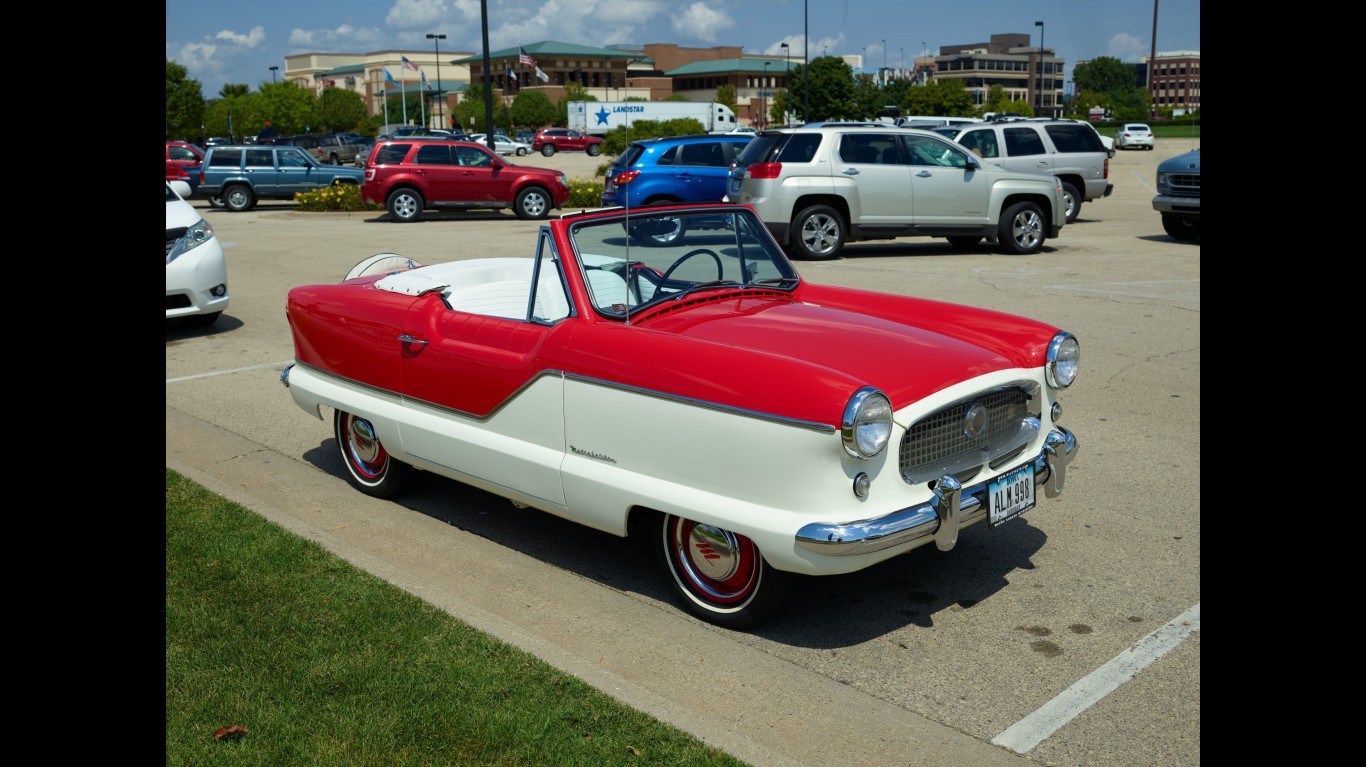
1958 Nash Metropolitan convertible
[in-text-ad]
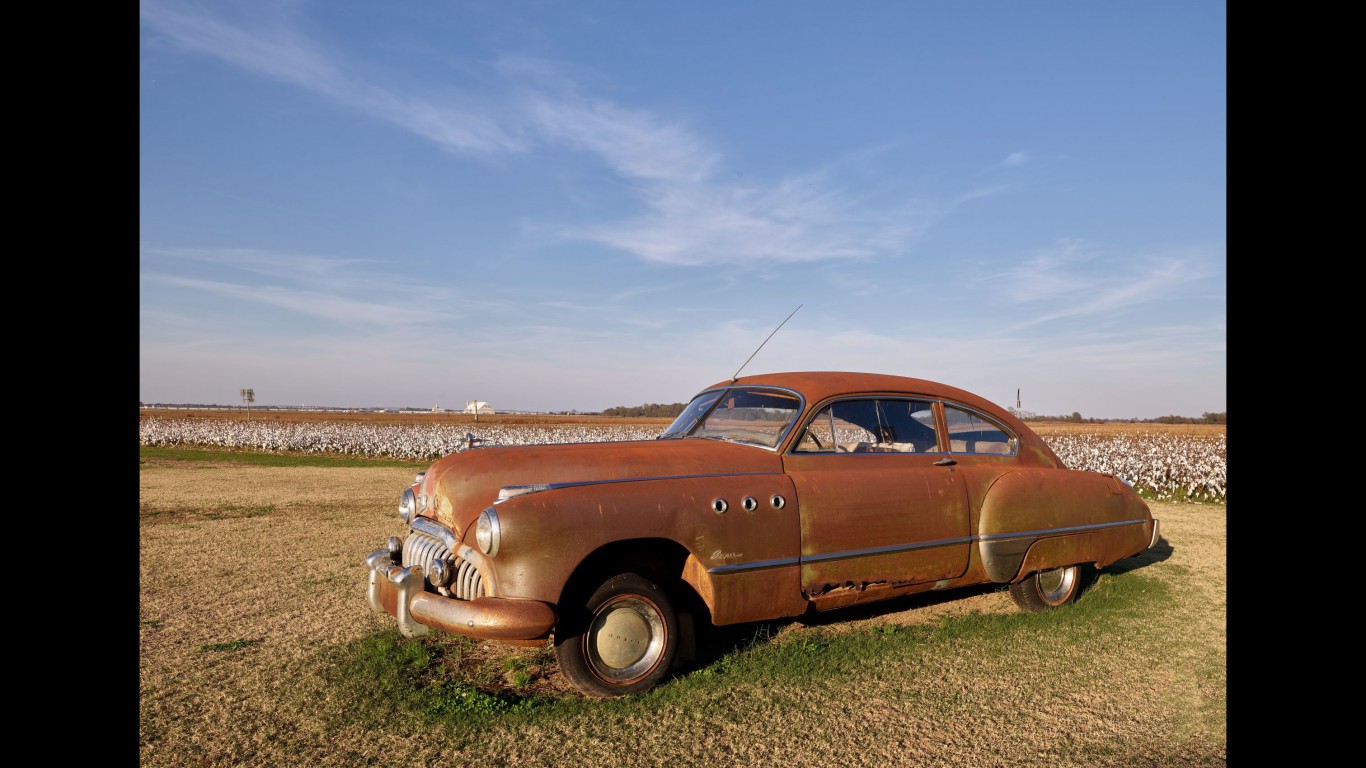
1949 Buick Super 8 coupe on Hopson Plantation, Mississippi
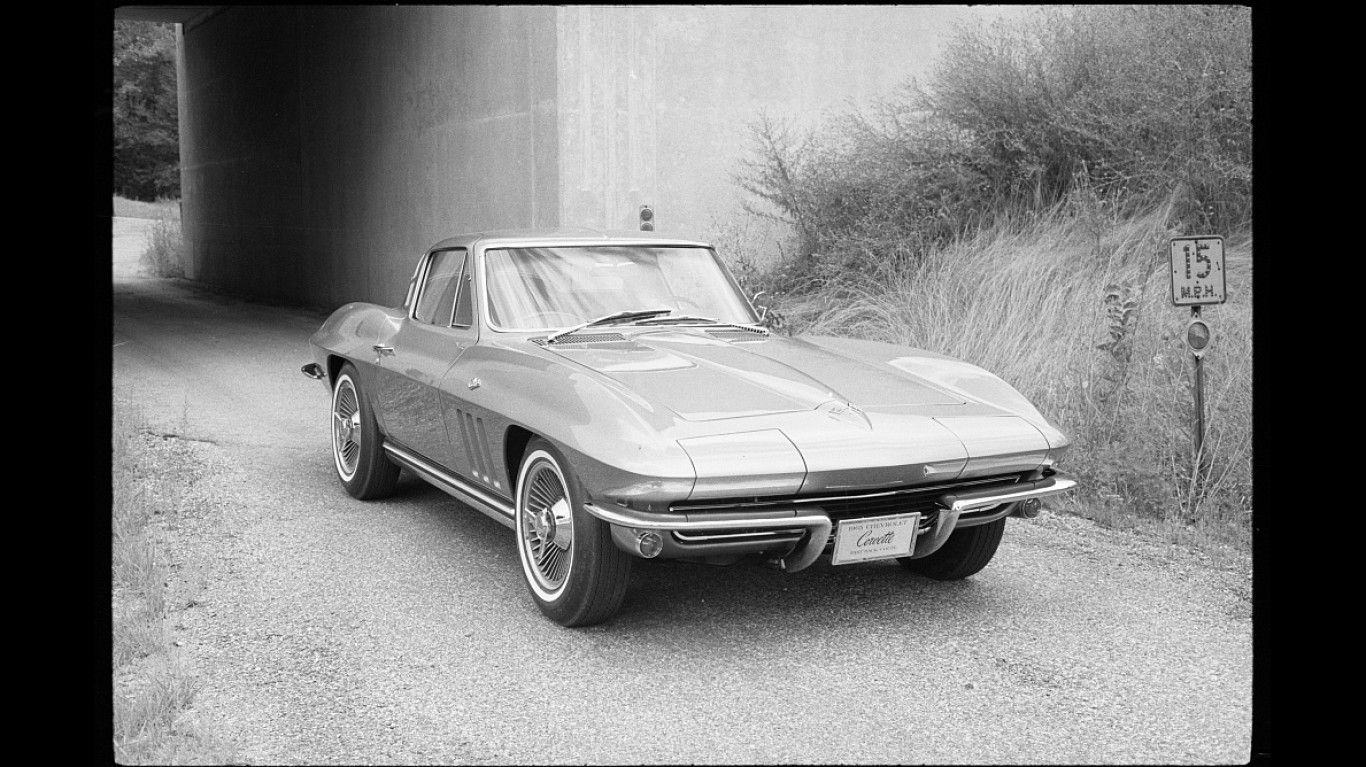
1964 Chevrolet Corvette

Woman adding water to the radiator of a Stutz Weightman Special at Benning Race Track, Washington D.C., circa 1916
[in-text-ad-2]

1918 Cadillac V8, used as a support vehicle by the American Expeditionary Forces in France during World War I

1956 Jaguar XK-140 prototype by famed industrial designer Raymond Loewy, built by Carozzeria Boano in Italy
[in-text-ad]
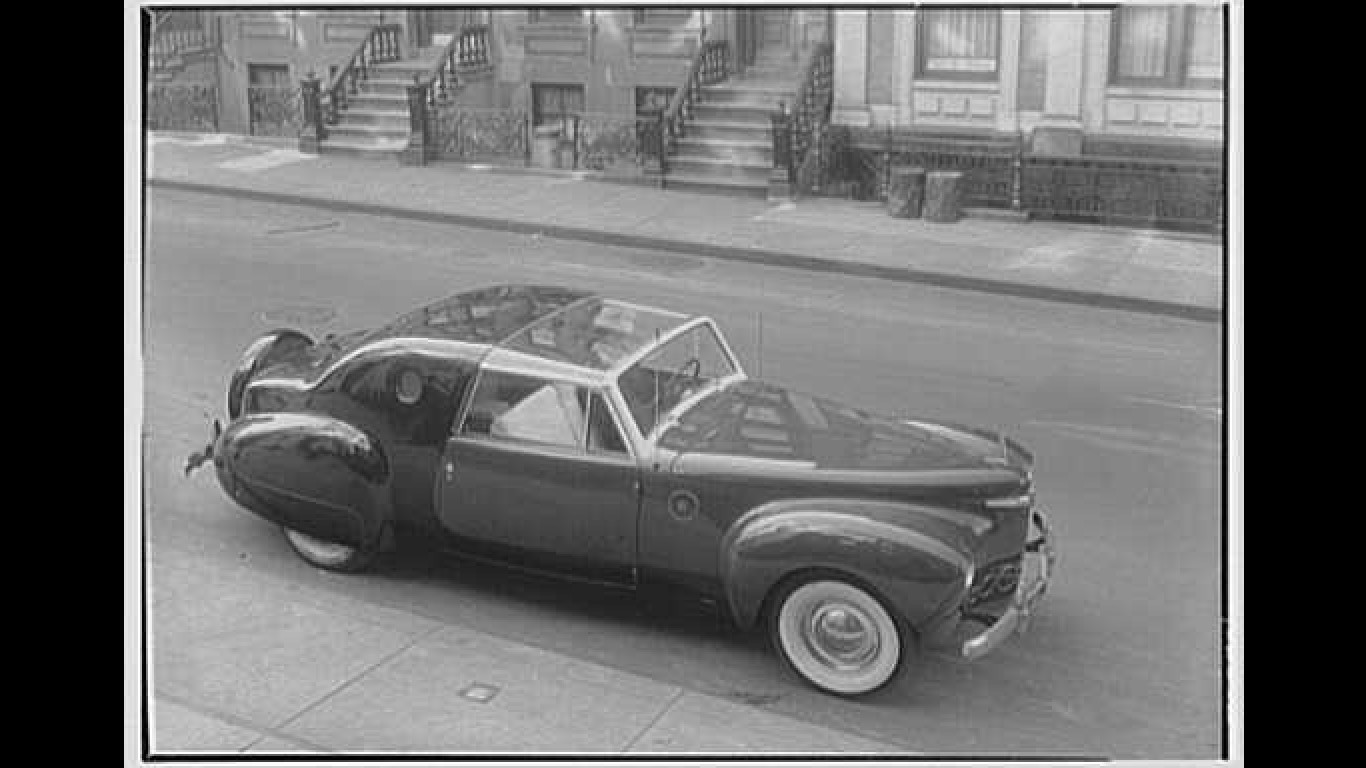
Designer Raymond Loewy’s 1941 Lincoln Continental Cabriolet, with plexiglass top
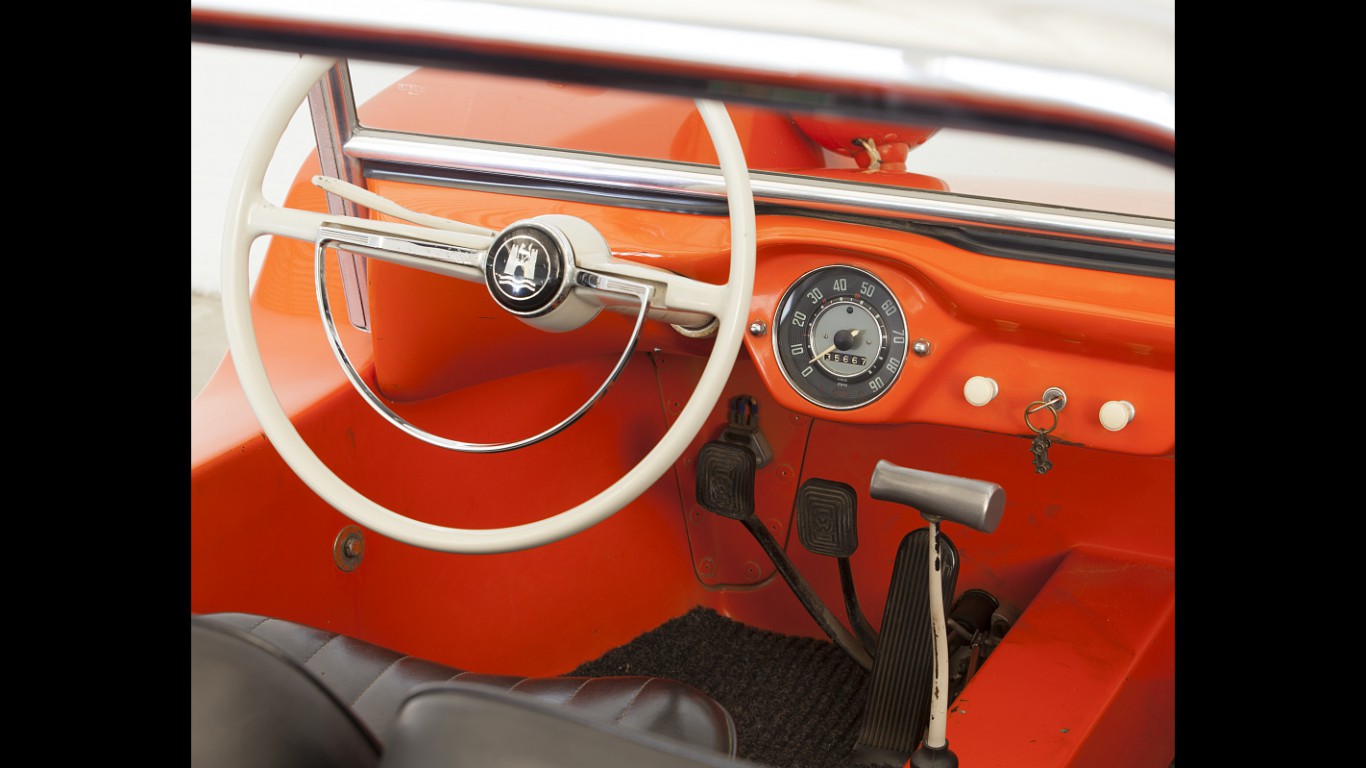
1964 Meyers Manx fiberglass dune buggy cockpit, shot in San Diego

Pioneering female race car driver Joan Newton Cuneo behind the wheel at a Glidden Tour, 1905
[in-text-ad-2]
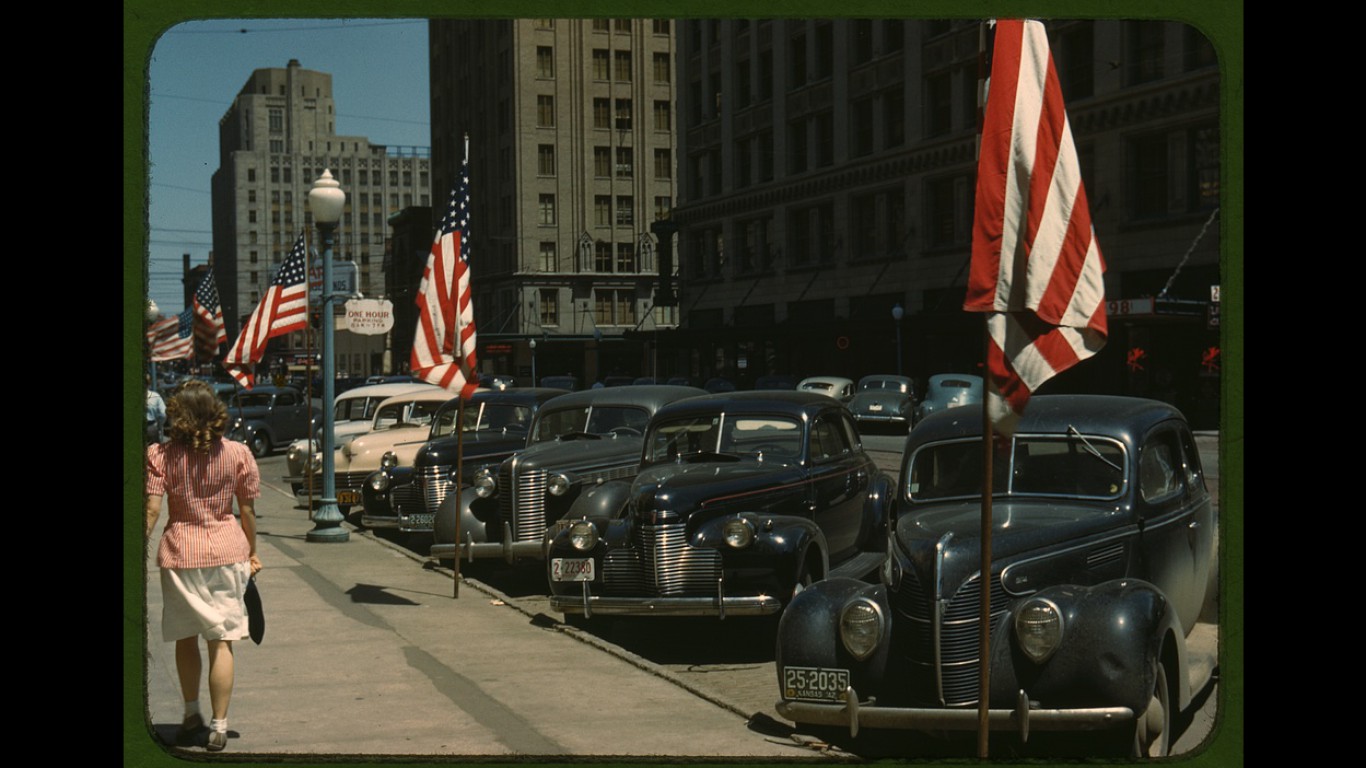
Cars parked diagonally in downtown Lincoln, Nebraska, 1942
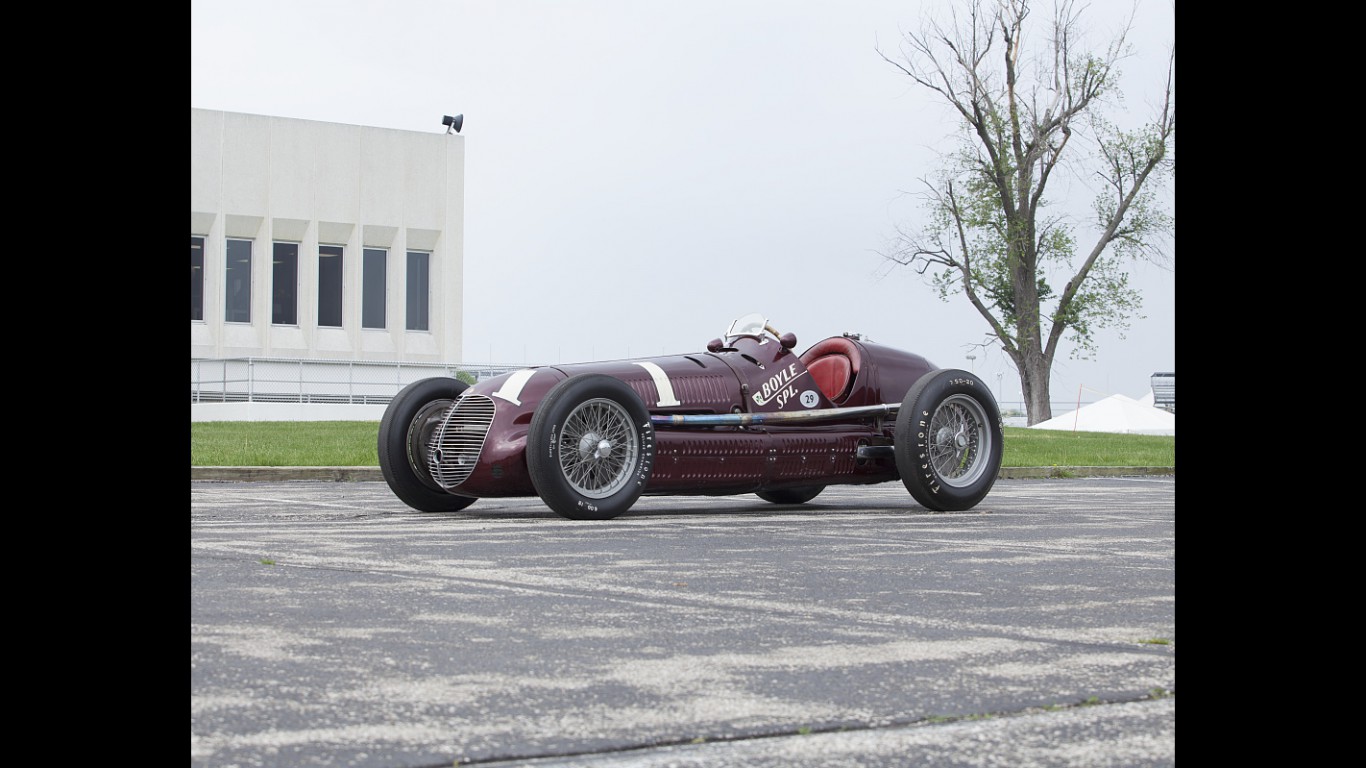
1938 Maserati 8CTF Boyle Special, driven by Wilbur Shaw to win the 1939 Indy 500
[in-text-ad]
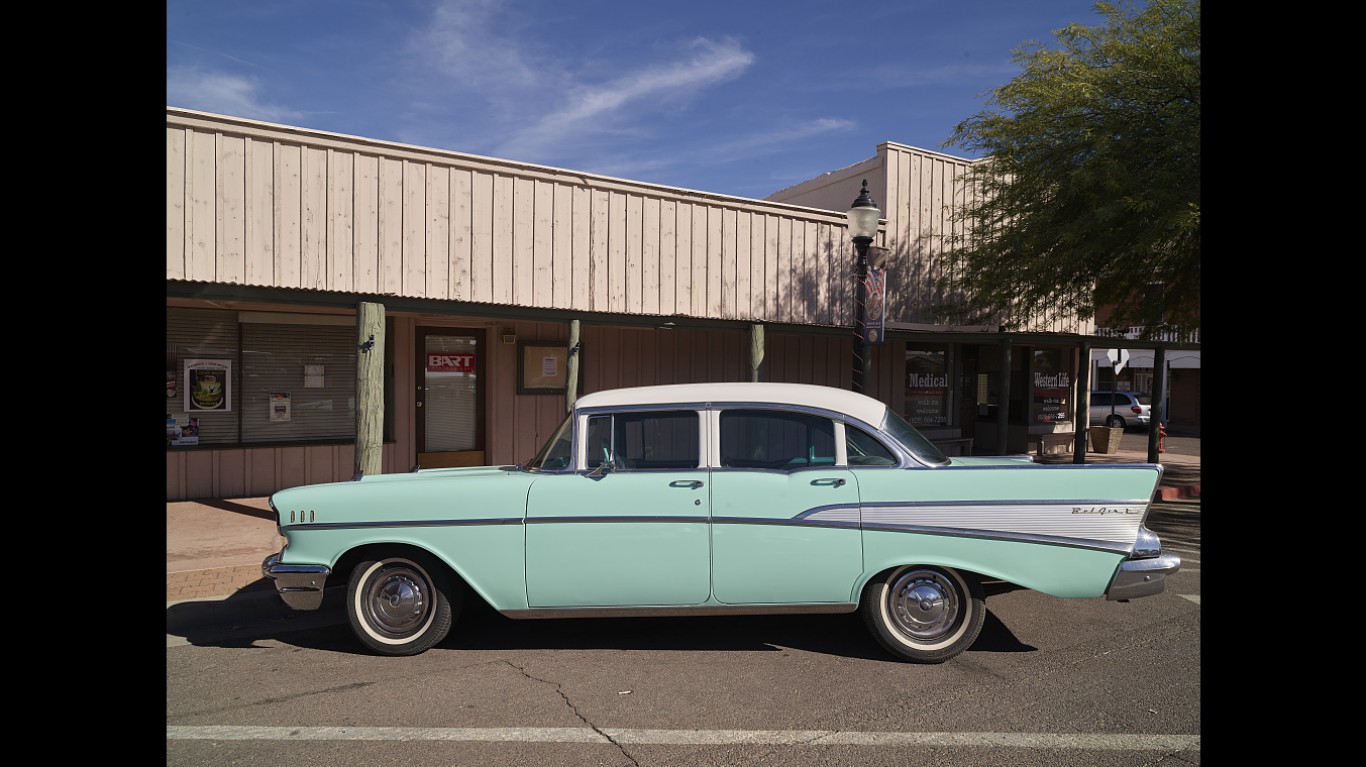
1957 Chevrolet Bel-Air parked in Wickenburg, Arizona
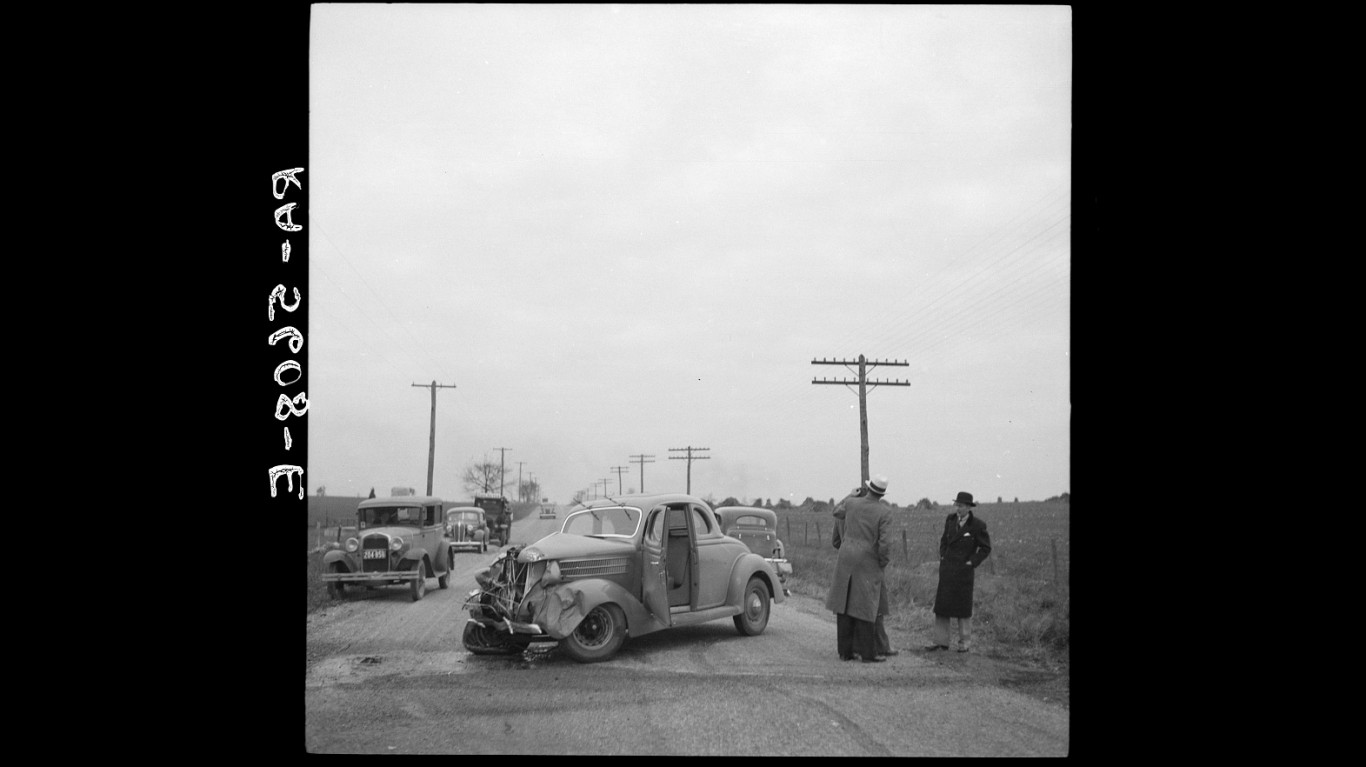
Auto accident on U.S. 40 near Cumberland, Maryland, 1936
[in-text-ad-2]

Auto parts shop in Atlanta, 1936 (image by famed photographer Walker Evans)
[in-text-ad]
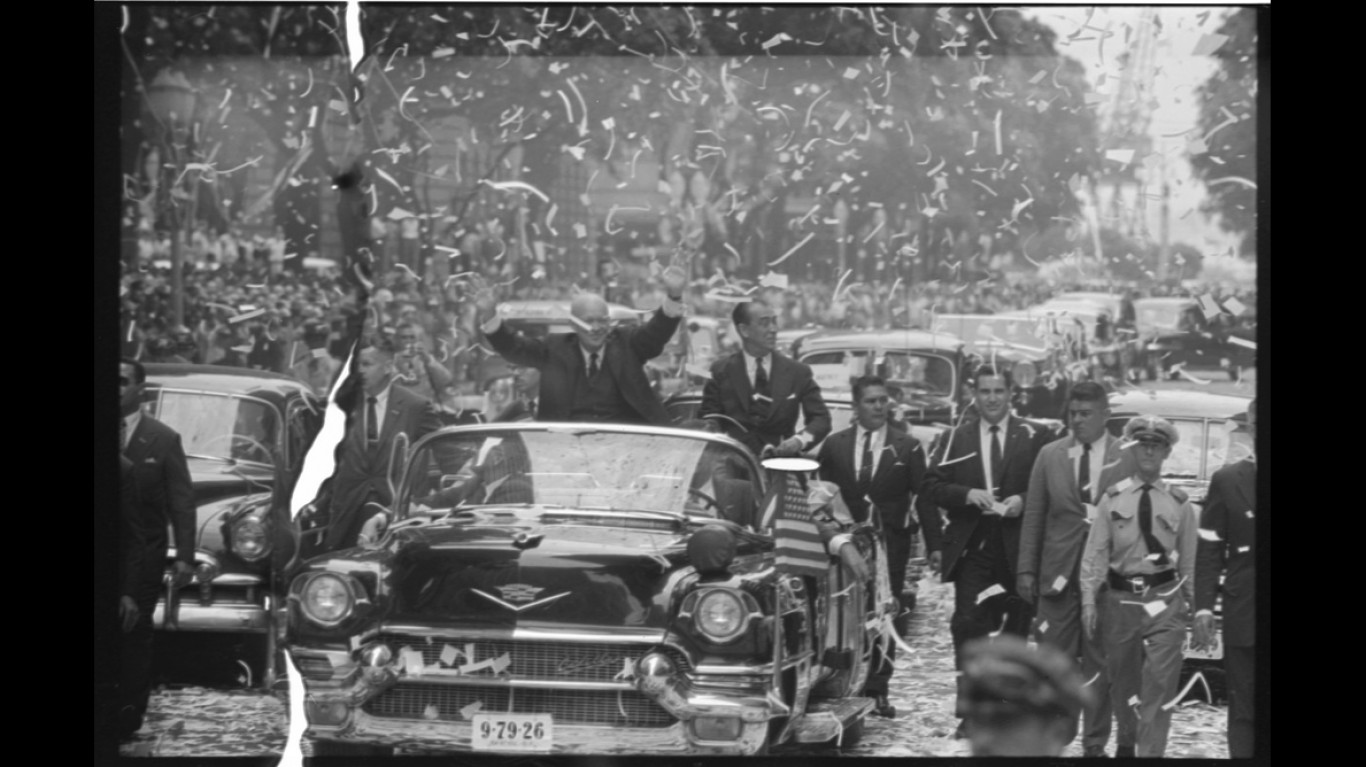
U.S. President Dwight D. Eisenhower in a ticker tape parade, in a 1956 Cadillac Coupe DeVille convertible, in Rio de Janeiro, Brazil, 1960
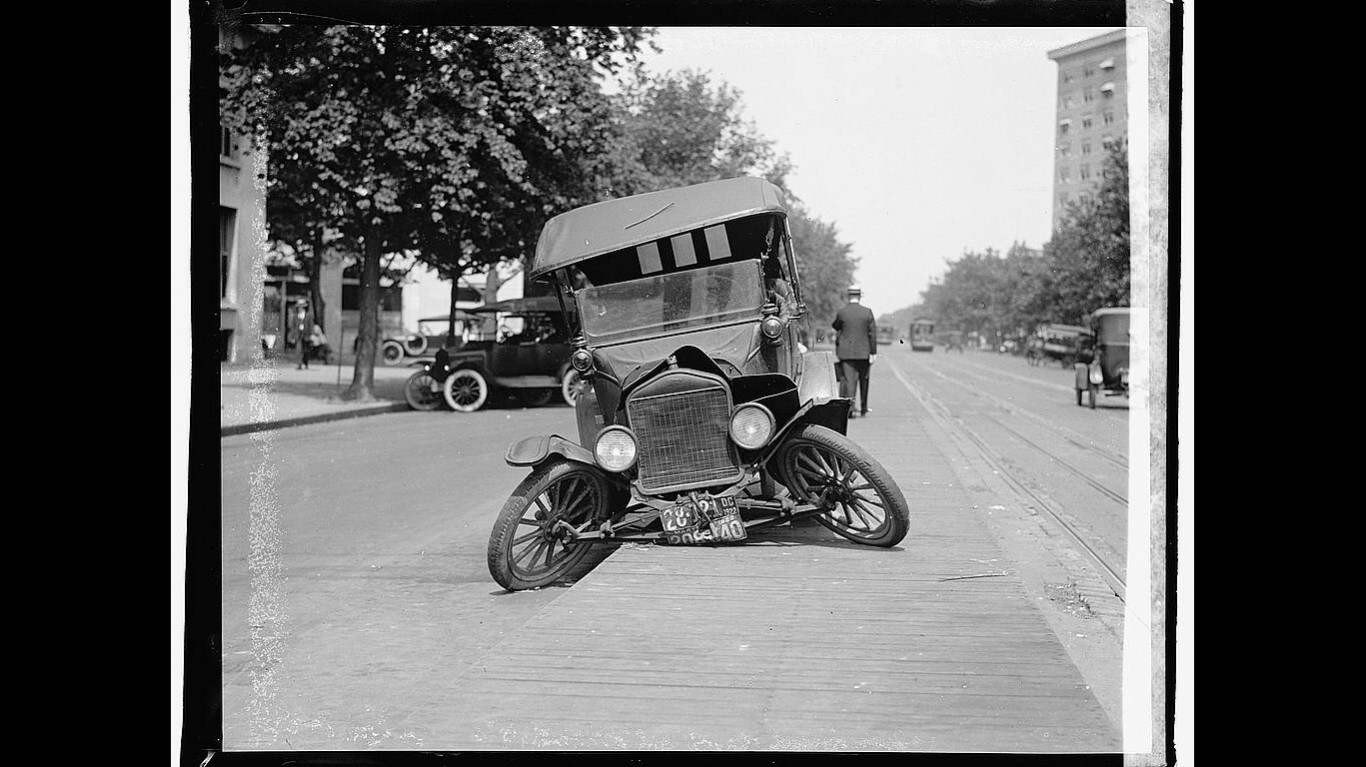
Car after an accident in Washington D.C., 1922
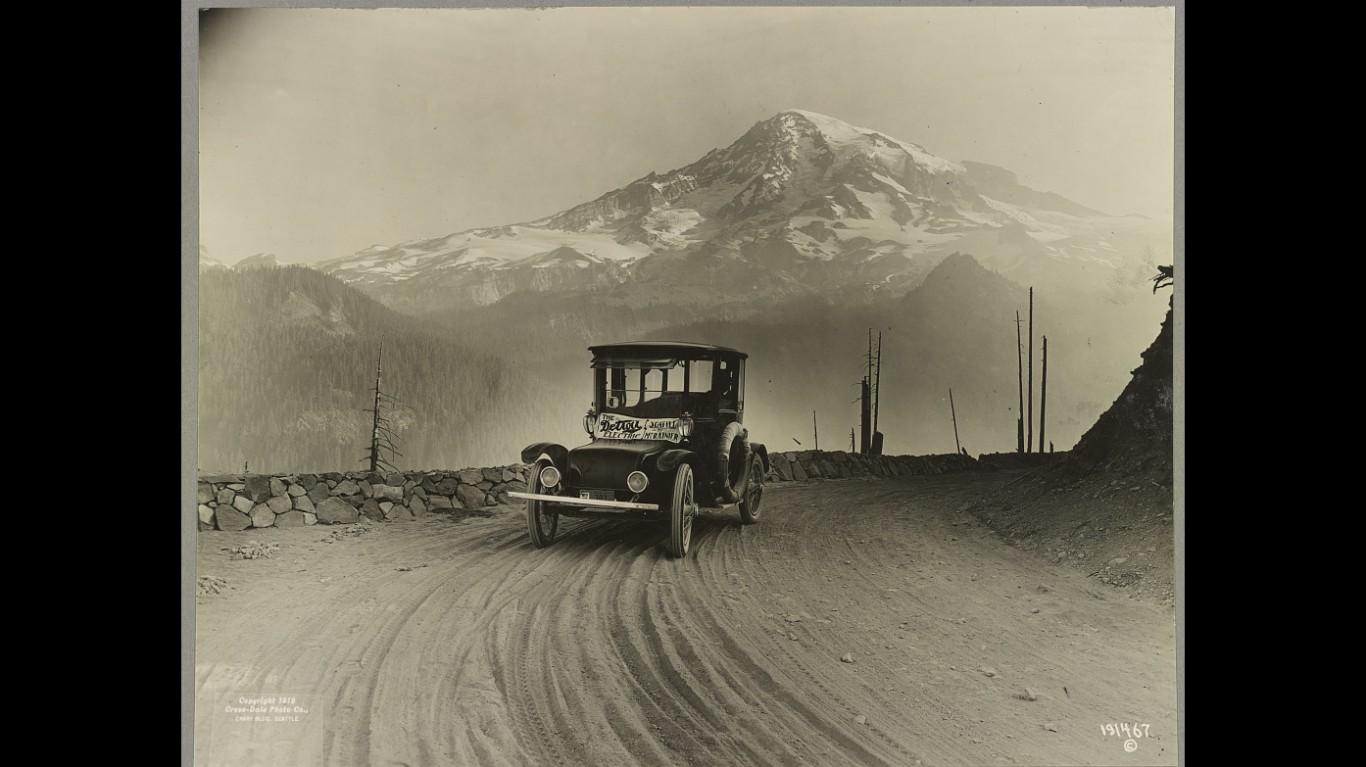
Anderson Detroit Electric car between Seattle and Mt. Rainier (in the background), 1919
[in-text-ad-2]

Wrecked Stutz race car outside Indianapolis Motor Speedway, circa 1910
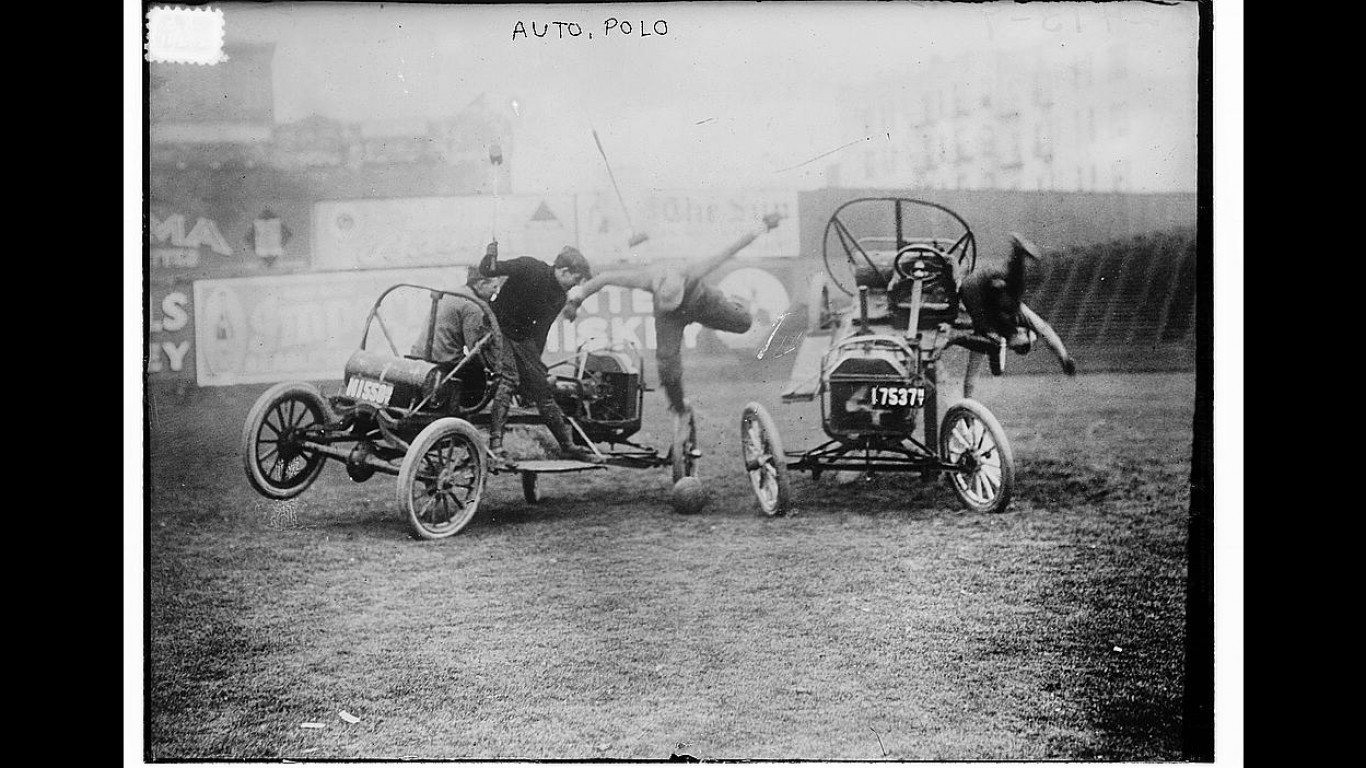
Staged scene during a (real) “auto polo” match at Hilltop Park in Manhattan (home of the New York Yankees when they were known as the Highlanders), 1910
[in-text-ad]

Ralph DePalma wins the 1914 Vanderbilt Cup race in Santa Monica in the “Grey Ghost,” a Mercedes race car
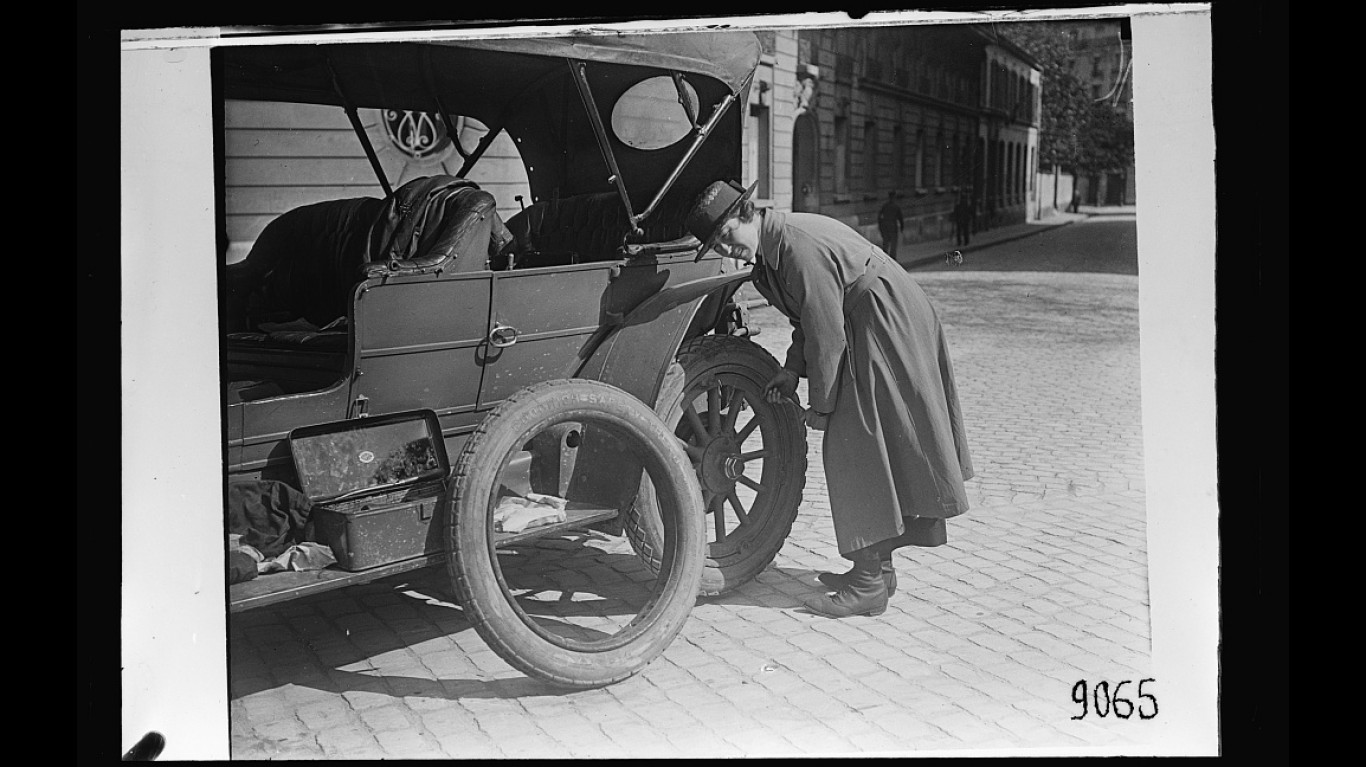
Sybil Robeson of Boston, a driver for the American Fund for French Wounded during WWI, changes a tire on a Paris street, 1918

Race car driver Robert Delno in a Dusenberg Richard Special, circa 1915
[in-text-ad-2]

16-year-old Nelm Clark in Washington D.C. in his homemade mini-car, made with motorcycle gears and powered by a lawnmower motor

Jesse Garcia in his low-slung 1963 Chevy Impala in Tucson, Arizona, 2018
[in-text-ad]
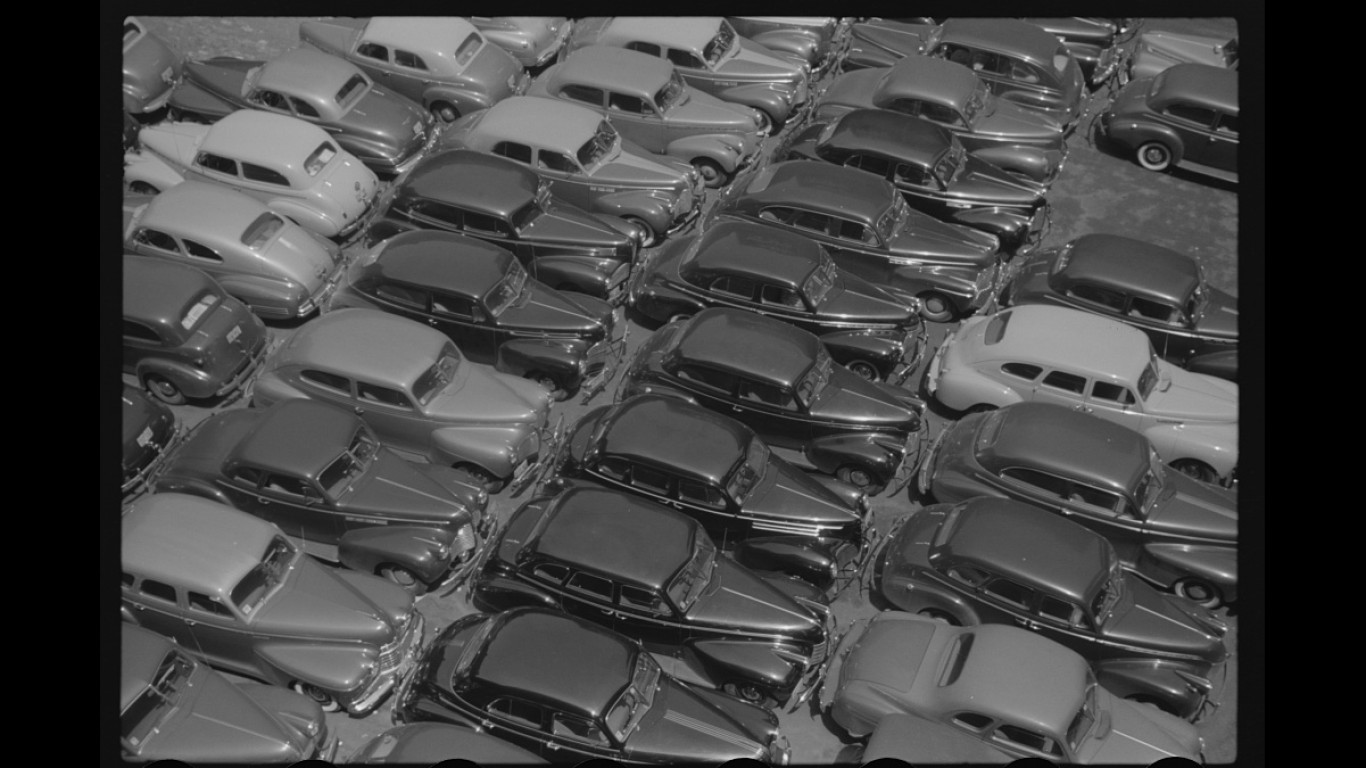
Chicago parking lot, 1941
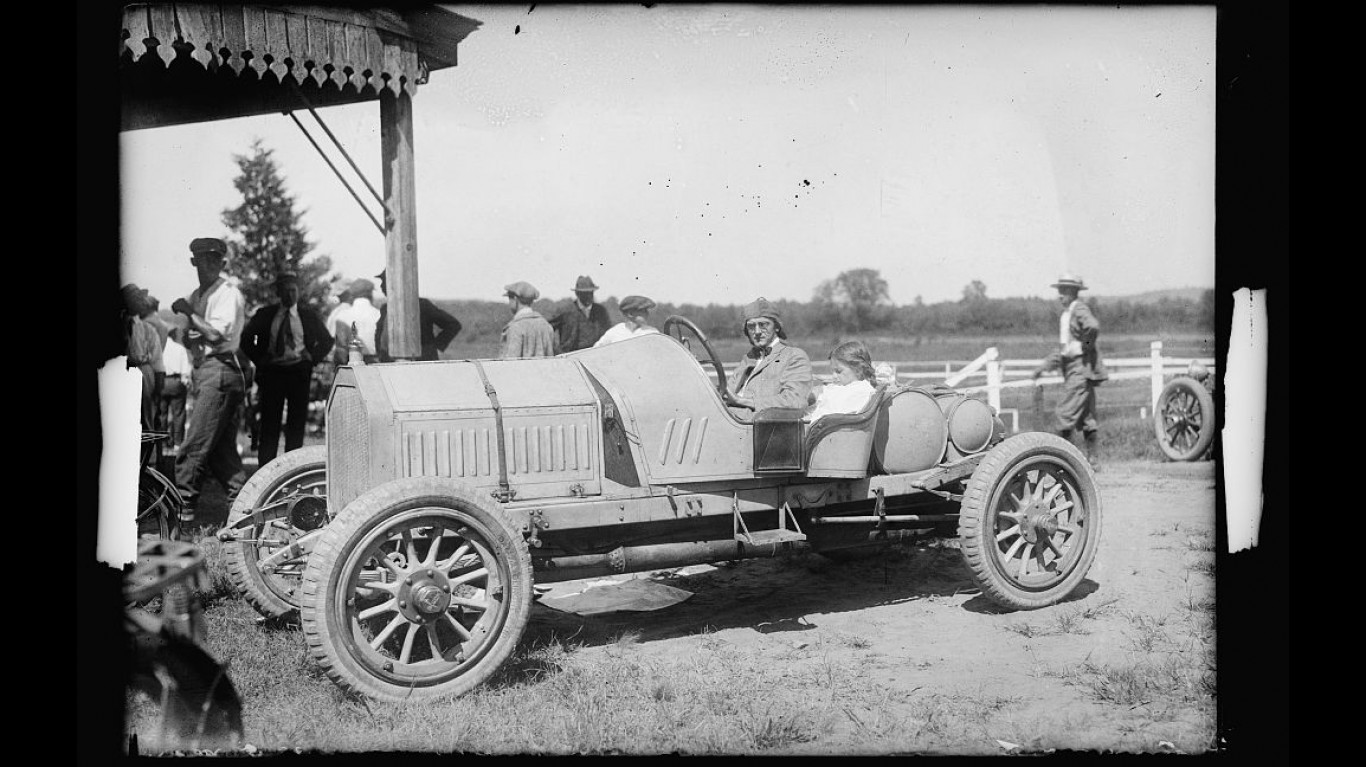
Unidentified race car and driver (with young passenger), circa 1915

Checker Taxi in front of the White House, Washington D.C., circa 1921
[in-text-ad-2]

Driver waiting for a four-star general outside the State, War, and Navy Building (now the Eisenhower Executive Office Building), Washington D.C., circa 1920
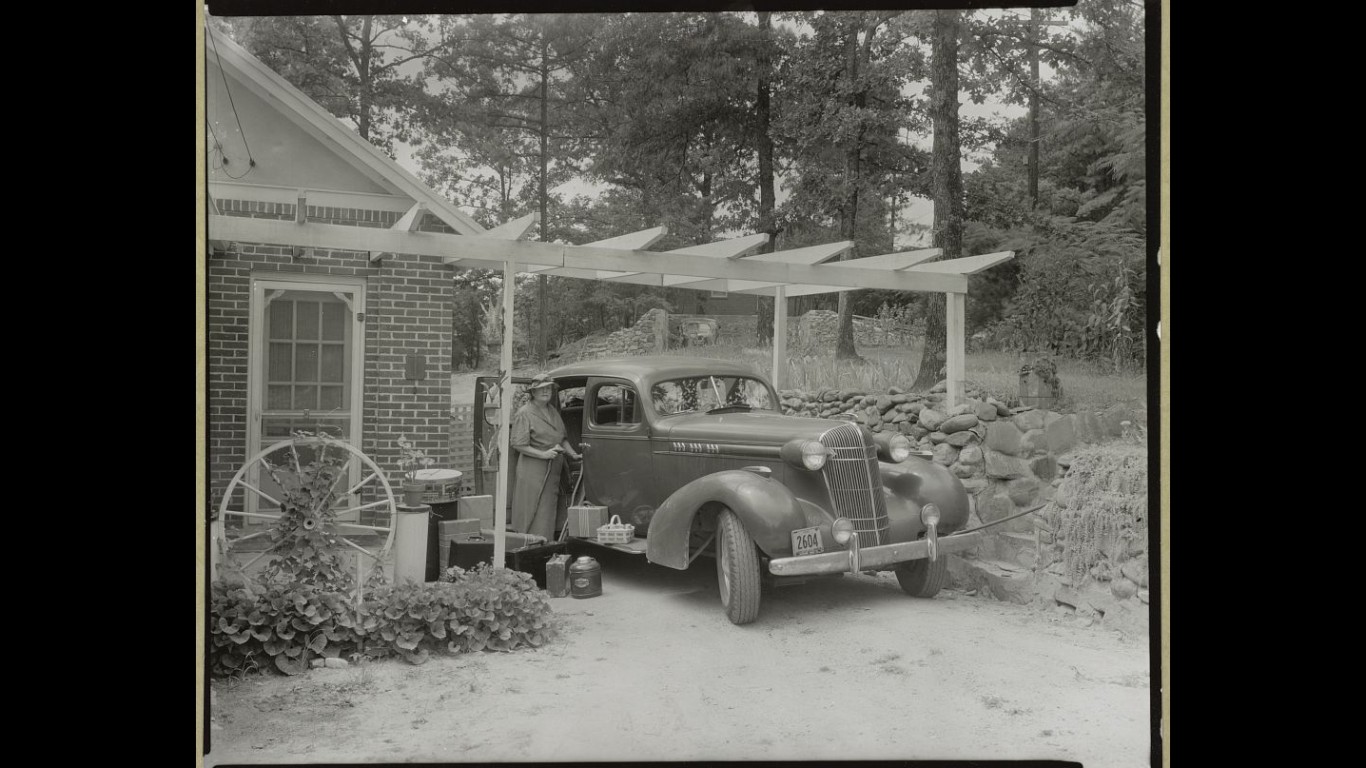
Photographer Frances B. Johnson at the Wheel Inn, Morganton, North Carolina, 1938
[in-text-ad]
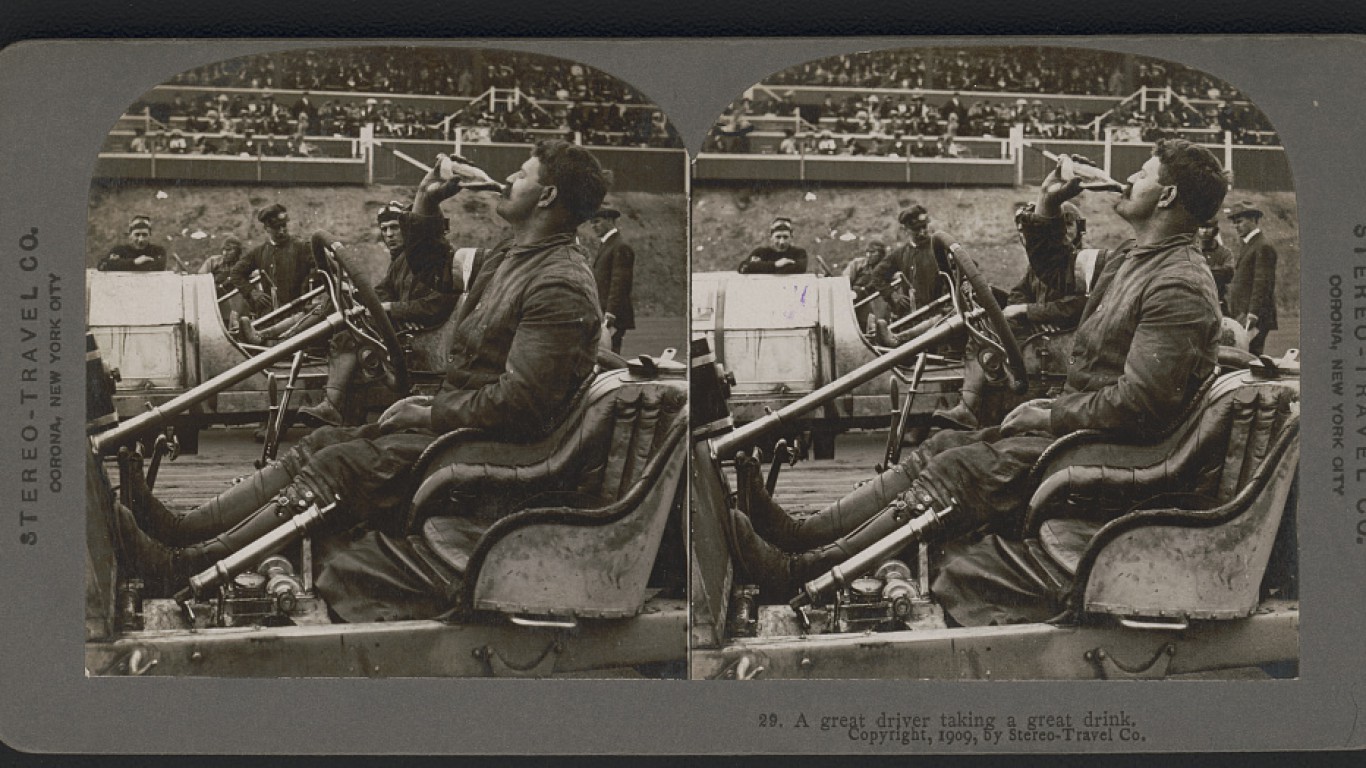
Swiss race car driver (and car company co-founder) Louis-Joseph Chevrolet drinking Coca-Cola at the Atlanta National Automobile Exposition, 1909

The last VW Rabbits roll off the assembly line in New Stanton, Pennsylvania, 1978

George Turner changes a tire, Moreno Valley, New Mexico, 1943
[in-text-ad-2]
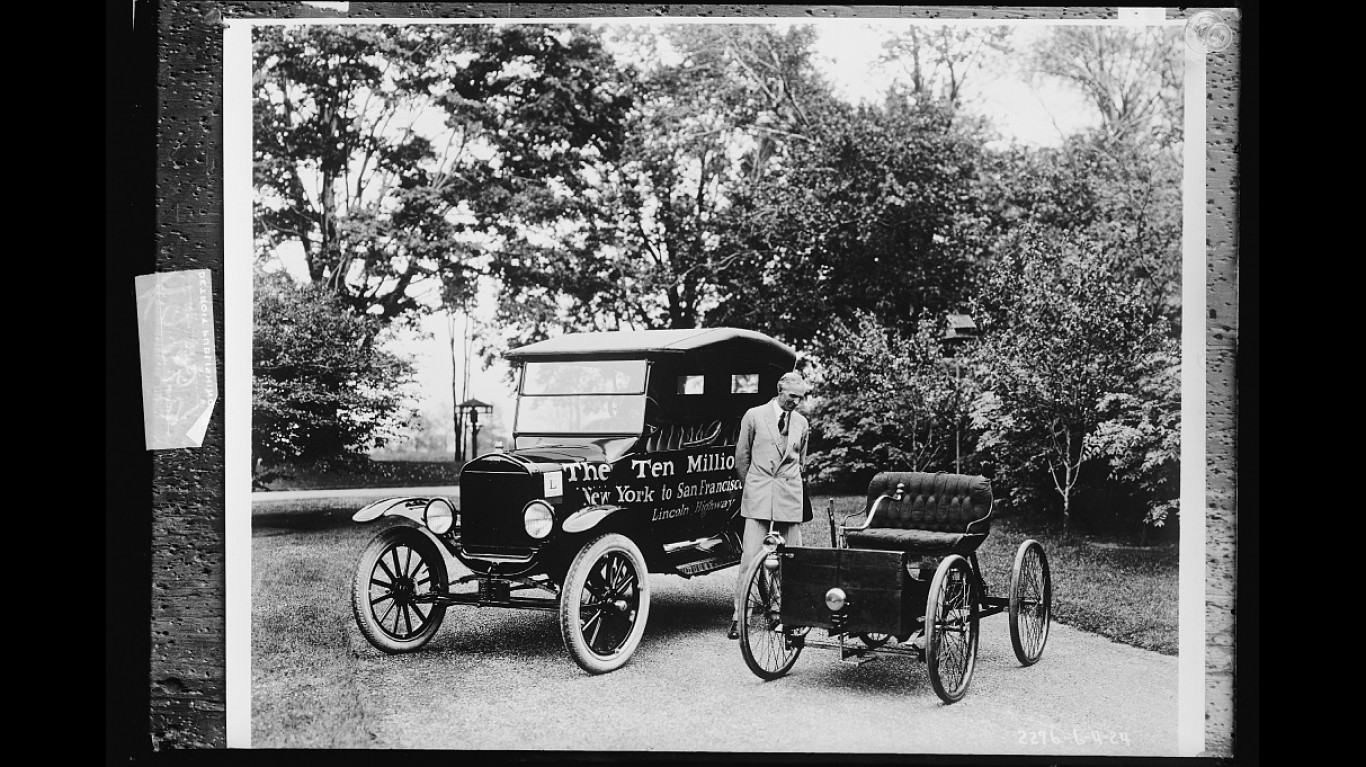
Henry Ford with a Model-T that was his company’s 10-millionth vehicle and an 1896 Ford Quadricycle that was his first, 1924
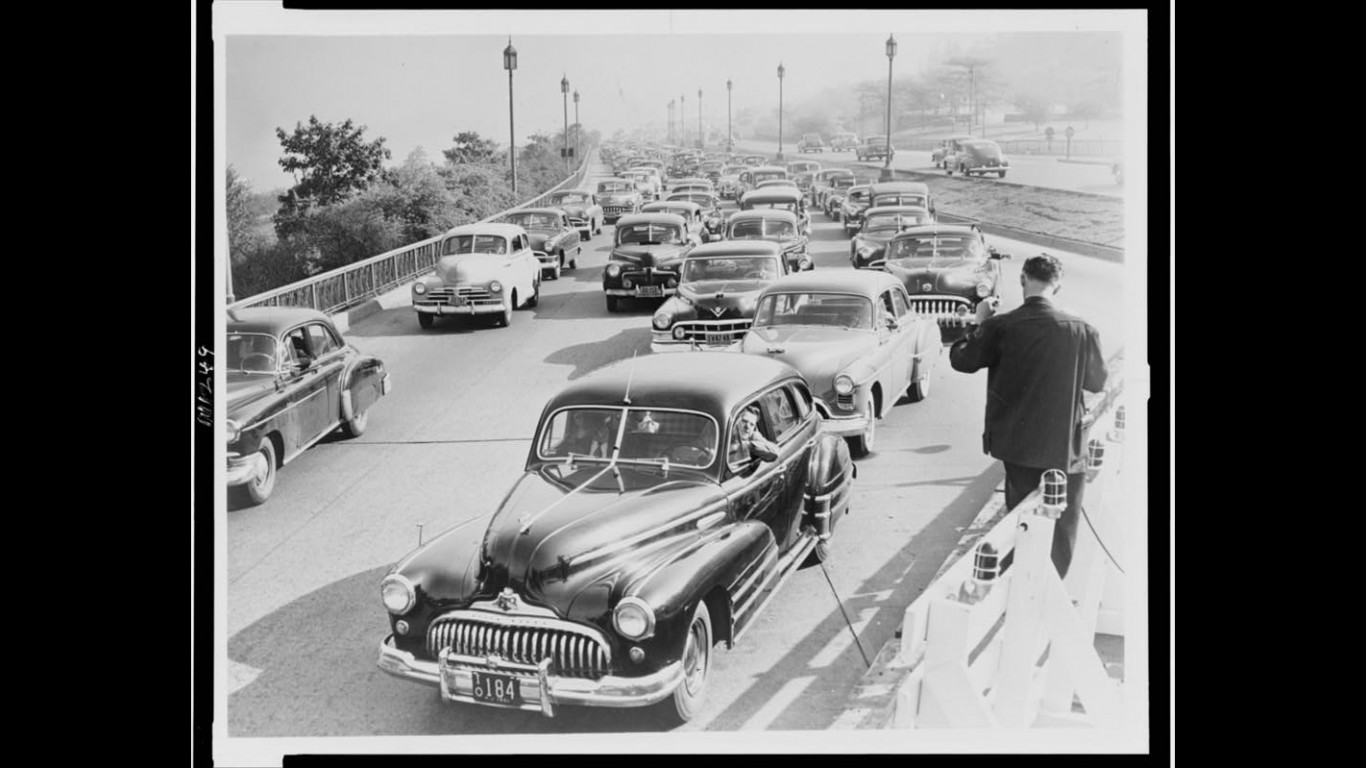
1948 or ’49 Buick Special (foreground) and other cars in a traffic jam on the West Side Highway, New York City, 1951
[in-text-ad]

“Spindle,” a sculpture by artist Dustin Shuler, which stood in Berwyn, Illinois (1989â2008); eight U.S. and imported cars were involved, model years 1967â1981
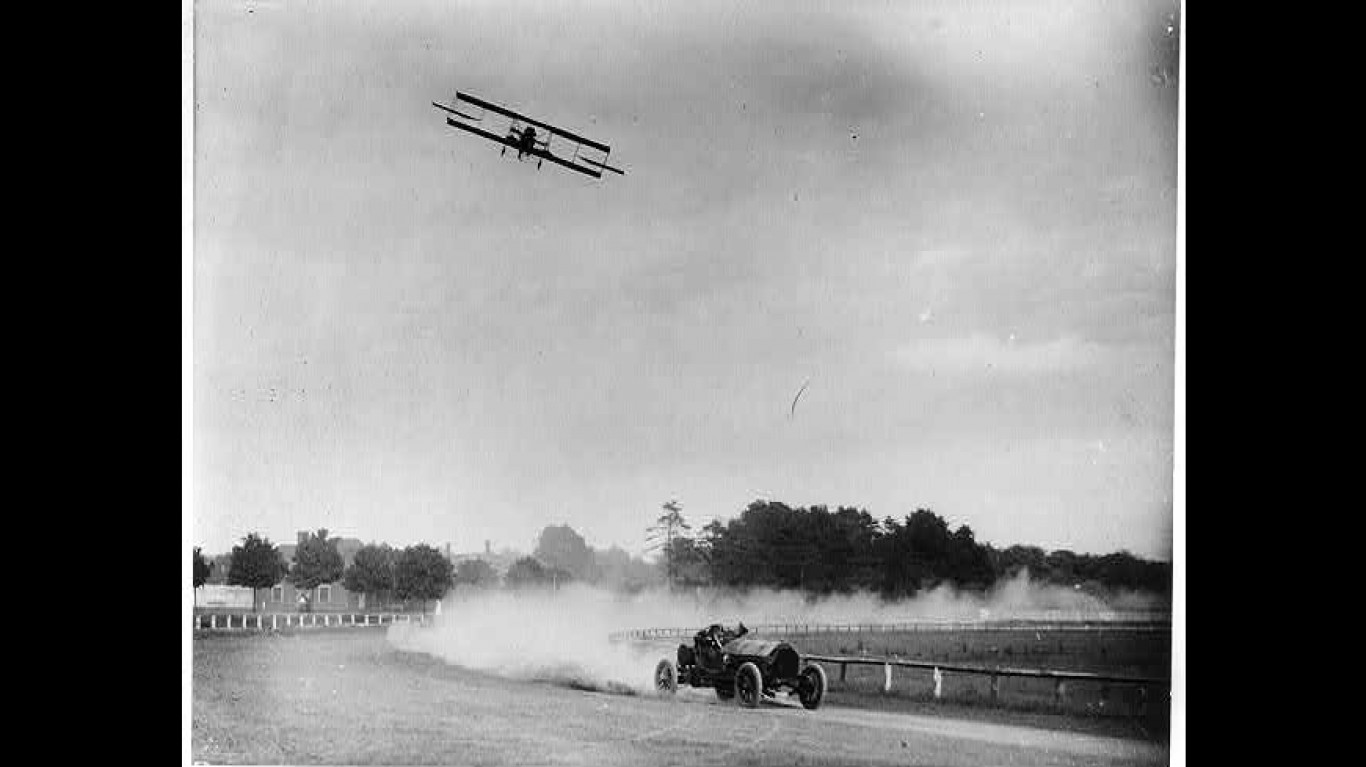
Aviator Lincoln Beachey’s Curtiss biplane races Barney Oldfield’s Simplex race car in Emeryville, California, 1914
100 Million Americans Are Missing This Crucial Retirement Tool
The thought of burdening your family with a financial disaster is most Americans’ nightmare. However, recent studies show that over 100 million Americans still don’t have proper life insurance in the event they pass away.
Life insurance can bring peace of mind – ensuring your loved ones are safeguarded against unforeseen expenses and debts. With premiums often lower than expected and a variety of plans tailored to different life stages and health conditions, securing a policy is more accessible than ever.
A quick, no-obligation quote can provide valuable insight into what’s available and what might best suit your family’s needs. Life insurance is a simple step you can take today to help secure peace of mind for your loved ones tomorrow.
Click here to learn how to get a quote in just a few minutes.
Thank you for reading! Have some feedback for us?
Contact the 24/7 Wall St. editorial team.
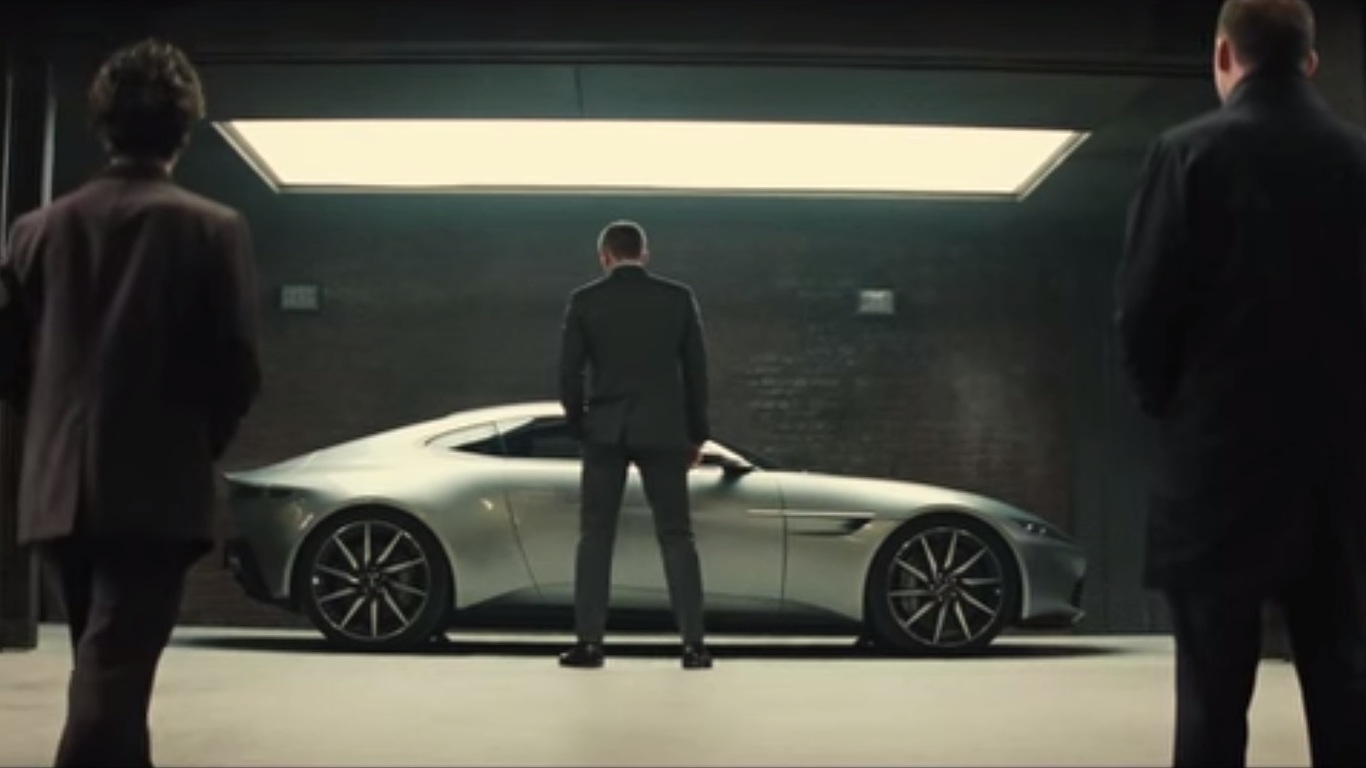 24/7 Wall St.
24/7 Wall St. 24/7 Wall St.
24/7 Wall St. 24/7 Wall St.
24/7 Wall St.
